Archaeology
-
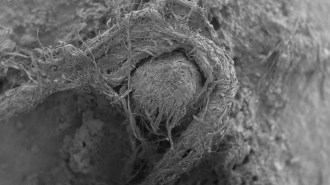 Archaeology
ArchaeologyThis is the oldest known string. It was made by a Neandertal
A cord fragment found clinging to a Neandertal’s stone tool is evidence that our close evolutionary relatives were string makers, too, scientists say.
By Bruce Bower -
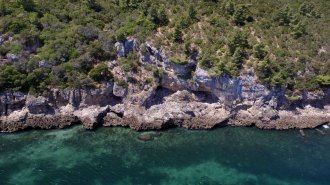 Archaeology
ArchaeologyNeandertals’ extensive seafood menu rivals that of ancient humans
Finds from a coastal cave in Portugal reveal repeated ocean foraging for this European hominid.
By Bruce Bower -
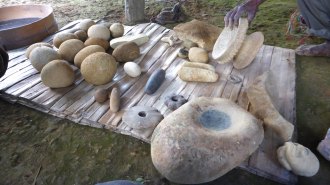 Archaeology
ArchaeologyNew Guinea’s Neolithic period may have started without outside help
Islanders on New Guinea experienced cultural changes sparked by farming about 1,000 years before Southeast Asians arrived, a study suggests.
By Bruce Bower -
 Archaeology
ArchaeologyThe Nazareth Inscription’s origins may refute ties to Jesus’ resurrection
Chemical analysis shows the tablet’s marble came from a Greek island, challenging the idea the decree concerned early Christianity in the Middle East.
By Bruce Bower -
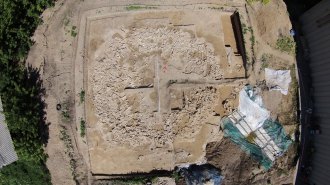 Archaeology
ArchaeologyThis is one of the largest Ice Age structures made of mammoth bones
A massive ring of mammoth bones, built by hunter-gatherers during the Ice Age, offers a peek at life 25,000 years ago.
By Bruce Bower -
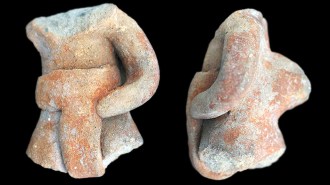 Archaeology
ArchaeologyAn ancient ball court sheds light on a game made famous by the Aztecs
A 3,400-year-old ball court in the southern mountains of Mexico suggests many societies contributed to the development of an ancient, well-known Mesoamerican ball game.
By Bruce Bower -
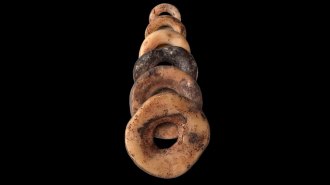 Anthropology
AnthropologyAn ancient social safety net in Africa was built on beads
A Stone Age network of communities across southern Africans was established using ostrich shell beads by around 33,000 years ago.
By Bruce Bower -
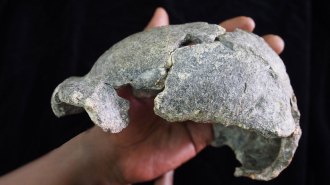 Anthropology
AnthropologyNew fossils and artifacts show Homo erectus crafted a diverse toolkit
Ancient hominid made stone tools demanding a range of skills and planning, a study finds.
By Bruce Bower -
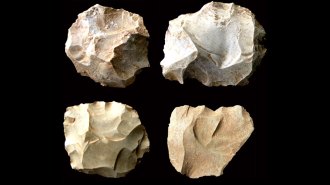 Archaeology
ArchaeologySouth Asian toolmaking withstood the biggest volcanic blast in 2 million years
Toolmakers continued to strike sharp-edged flakes as usual after a volcano’s colossal eruption around 74,000 years ago on what’s now Sumatra Island.
By Bruce Bower -
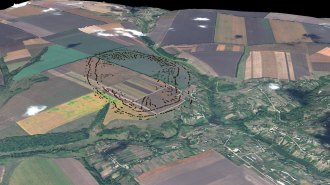 Archaeology
ArchaeologyAncient ‘megasites’ may reshape the history of the first cities
At least two ancient paths to urban development existed, some archaeologists argue.
By Bruce Bower -
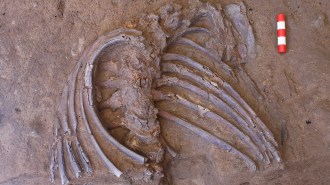 Archaeology
ArchaeologyNew cave fossils have revived the debate over Neandertal burials
Part of a Neandertal’s skeleton was found in a hole dug in the same cave in Iraqi Kurdistan where the “flower burial” was found in 1960.
By Bruce Bower -
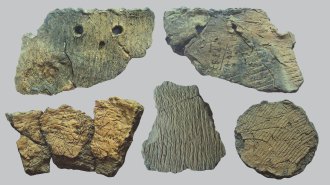 Archaeology
ArchaeologyFood residues offer a taste of pottery’s diverse origins in East Asia
Clay pots emerged in different places and for different reasons, starting at least 16,000 years ago, a study suggests.
By Bruce Bower